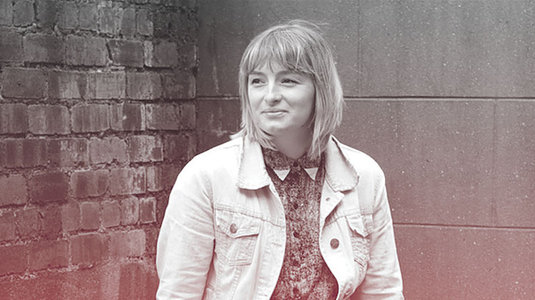3 ways to stay inspired when working in-house
Alexandra Humphry-Baker considers how to stay motivated and relevant as an in-house designer.

Recently, there's been a growing trend for companies to move from employing design agencies to building their own in-house teams. It's time to revisit the in-house designer's role, and the opportunities – not just the challenges – it provides.
A few months ago I was catching up with a few fellow designers when talk turned to work. Two of them worked in agencies and were recounting bitterly how they were losing jobs – not to other agencies, but to a previous client's recently created in-house team. A little digging showed me that this was not a one-off occurrence.
Service design agency Adaptive Path was purchased by credit card company Capitol One, Teehan+Lax 'partnered' with Facebook, and just a few months ago design giant Lunar was bought by management consulting firm McKinsey. In the UK, banking giant Barclays recently grew its in-house team from six to 67 in just one year.
It's understandable that companies are investing in internal design teams. They allow for a faster route to market and greater gains through institutionalising knowledge and brand expertise – two things that traditional agencies struggle to achieve. Of course, change is always uncomfortable. However, as design becomes recognised as the differentiating factor in business and gains market share, new paradigms are emerging where we, as designers on the inside, have the potential to drive change in business at a more meaningful level.
Nevertheless, much has been written on the subject of the 'disappearing business of design' – the essence being that internal design teams struggle to remain creative and innovative in a corporate environment. Companies with huge internal design teams, such as Twitter and Spotify, have paved the way in countering this by investing heavily in building a design-led company culture.
However, for the rest of us working on the inside without the budget for 'war rooms' or design laboratories, it's crucial we find other means to keep on top of our game. Below is some advice I've picked up working client-side for the past few years.
01. Never stop learning
To borrow from Mike Monteiro: "Like any craftsperson, a designer is only as good as their tools". It's important to review them often and stay on top of what's new. Turn repetitive jobs or boring tasks into opportunities to learn a new skill or try out a new programme.
Daily design news, reviews, how-tos and more, as picked by the editors.
02. Share your process
If you are part of a small design team, it's crucial to bring other members of the company into the design process. Luckily for us, design is fun and people are naturally drawn to visuals. So the first step is to take over the walls with your works in progress. Pin up your research, wireframes, quotes from users, or anything that pulls people in and encourages 'water cooler chat'.
You'll be surprised what insights so-and-so from marketing has about your users if you give them a space to share them. Take this a step further by inviting them into your process by running workshops that explore an idea you are working on or that needs buy-in from other departments. Gamestorming (gamestorming.com) is a brilliant toolkit to get you started facilitating co-creation workshops within your company.
03. Fill the well
Working in-house, it's more important than ever to stay inspired by exposing yourself to a multitude of situations. Go to galleries, join a print workshop, read fiction, do whatever you can to add to your internal library of ideas. Otherwise you'll be left scraping the barrel and reinventing the old.
Next, get out of your comfort zone. Attend events. Better still, speak at them, because formulating and articulating what you do is the best way to bring people into your process and recreate that studio environment.
Finally, make time for side projects. Some designers build products in their spare time or run a blog. I myself opted to start a CreativeMornings chapter in my city.
Whatever you choose, immerse yourself in something outside of work, however removed from your current role. I guarantee the return on time investment will be tenfold.
Learn, build empathy for your role and keep the inspiration well topped up. These are the first steps you need to take to help you, as an in-house designer, stay inspired, motivated and relevant.
This article originally appeared in issue 271 of net magazine.
Words: Alexandra Humphry-Baker
Alex is a UX designer and design lead at startup Mallzee. Her role spans design strategy, user research and interaction design.
Liked this? Read these!
- How to get respect as an in-house design team
- Download free textures: high resolution and ready to use now
- The best photo apps for iPhone, iPad and Android

The Creative Bloq team is made up of a group of art and design enthusiasts, and has changed and evolved since Creative Bloq began back in 2012. The current website team consists of eight full-time members of staff: Editor Georgia Coggan, Deputy Editor Rosie Hilder, Ecommerce Editor Beren Neale, Senior News Editor Daniel Piper, Editor, Digital Art and 3D Ian Dean, Tech Reviews Editor Erlingur Einarsson, Ecommerce Writer Beth Nicholls and Staff Writer Natalie Fear, as well as a roster of freelancers from around the world. The ImagineFX magazine team also pitch in, ensuring that content from leading digital art publication ImagineFX is represented on Creative Bloq.
